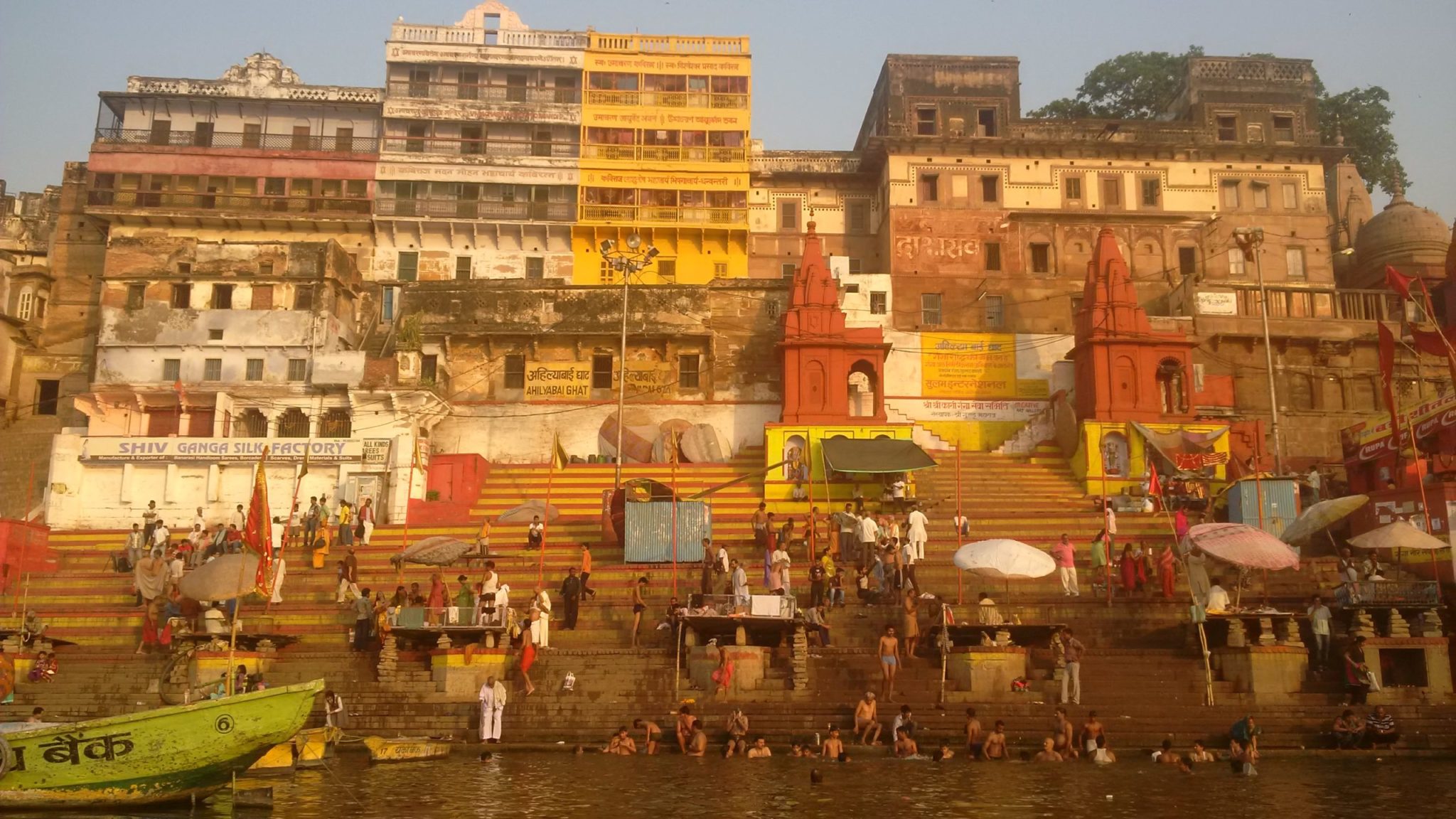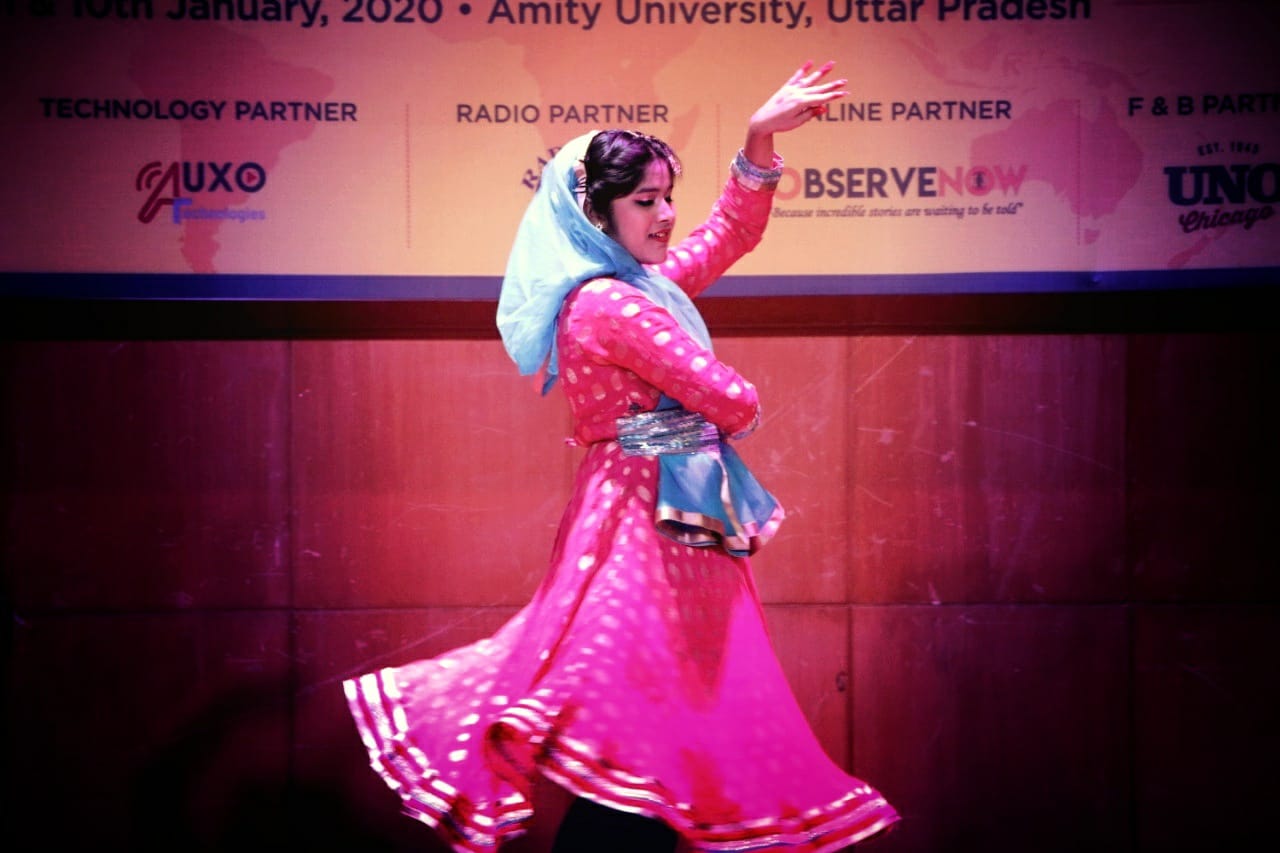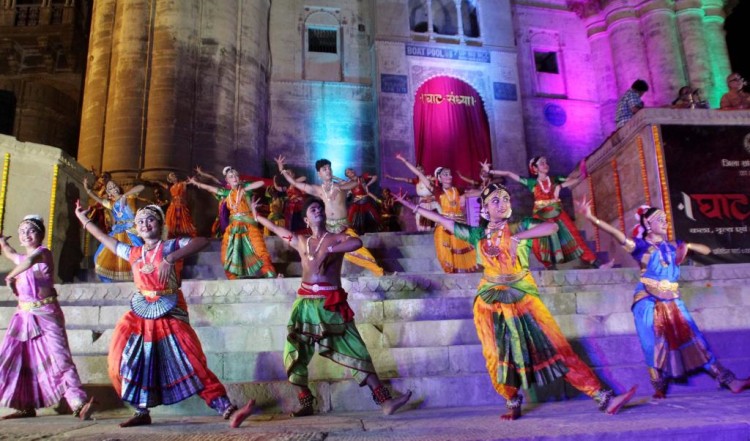India is a beautiful painting filled with vibrant colors, where these colors are set in a pleasant composition giving a sense of peace. There is a beauty behind the chaotic differences in culture throughout the country. Remember it’s not about the chaos but the beauty.

Classical Banaras
The religious capital of India and one of the oldest cities in the world- Varanasi (Banaras), is situated at the banks of the sacred river “Ganges”. The Ganges is considered the holiest river in India. Rising in the Himalayas and emptying into the Bay of Bengal, it drains one-fourth of the territory of the country. Banaras is well known for its religious ambiance and beautiful culture. This city is blessed with aesthetic art and heritage.
Banaras has been a major center where many dance-drama forms flourished. In dance forms, Banaras patronized Kathak and a distinct Gharana Kathak Banaras Gharana took shape. Kathak is the classical dance form originally from Uttar Pradesh having three major Gharanas (houses) based in Lucknow, Jaipur, and Banaras.

The Tradition of Kathak Dance
Kathak is a blend of dance, music, and drama; a blend of Hindu and Muslim culture; a blend of history and modernity; and finally, a blend of eloquence and charisma. Roots of kathak have grown from the ancient Sanskrit text ‘Natya Shastra’ written by Indian musicologist Bharata Muni. The text is based on performing arts and traces of kathak are also found in it.
The word kathak itself comes from the Vedic Sanskrit term ‘Katha’ which means story. Thus, the text-based analysis indicates kathak as an ancient Indian classical dance form. It is assumed that it was born in Varanasi and then it traveled to Jaipur and Lucknow. As the word suggests kathak is an art of storytelling through the means of an excellent amalgamation of dance (nritya), music (sangeet), and drama (abhinaya).
The Art of Storytelling
Kathak is considered to be the child of the Kathakaris. Kathakaris were the ancient bards who used to travel and perform religious storytelling dance. Before the reign of Mughals in India, they used to perform in temples. But during the reign of the Mughal dynasty, kathak was given the status of court entertainment. Yet, kathak was popular at that period of time.
The decline of kathak started with the arrival of the British in India. Since there weren’t any documented texts to preserve this art form, the artists bestowed the knowledge to their next generation in the family itself. This gave rise to three prominent houses or schools- Banaras Gharana, Jaipur Gharana, and Lucknow Gharana, with each of them holding unique traits.
Thus, kathak was nurtured from generation to generation. Soon after the independence from the British, kathak tradition revived itself by becoming one of the most elegant and popular classical dance forms of northern India.
Banaras Gharana- the House of Natwari
Kathak Banaras Gharana was developed by Renowned Kathak dancer Janakiprasad. He originally belonged to Bikaner. He established Banaras Gharana of Kathak while teaching his student the intricacies of this classical dance. There are several differences that stand this Gharana apart from other Kathak Gharanas. Among other things, Thaat (a piece of performance) and Tatkaar (footwork) performed under this Banaras Gharana differs from other Gharanas. Unlike Jaipur Gharana, the pirouettes (chakkars) are used minimally.
The uniqueness of Kathak Banaras Gharana lies in the fact that the artists often take chakkars from both right-hand and left-hand sides with equal confidence. Banaras Gharana is also known for bringing the best out of the stage. The way the artist exquisitely covers the stage and yet maintains his stance at the sam (first beat of a taal) is phenomenal.
Let’s introduce ourselves to an artist from Banaras Gharana also. A female artist wearing a gorgeous long Anarkali suit (or lehenga) accessorized with heavy Mughal inspired jewelry. The dupatta forming an angrakhha (koti) is in the front and also beautifully covers her hair bun from behind, while the kamarbandh is holding the dupatta together on the front side.
To add to the mystical charm, she gracefully wraps around her feet the ankle bells. She starts performing on the Natwari or the dance bols, which are the specialty of Banaras Gharana. Natwari is different from the tabla and the pakhawaj bols. It particularly means portraying the stories (lilas) of lord Krishna.
Ghat Sandhya In Banaras

Banaras believes in promoting Indian culture and heritage. It encourages and supports the artists form the holy land. As a piece of appreciation, it holds a classical dance performance on a daily basis on the banks of the holy river Ganges (Ghats).
The event is addressed as Ghat Sandhya and every evening as the sunsets leaving its charisma behind a dancer synchronizes with the beauty and mesmerizes the hearts of the audiences. Ghat Sandhya witnesses grand Kathak performances stimulating the interest of common folks.
Kathak- Storytelling with Flow.
Let’s experience the beauty of Kathak in a rhythmic form,
Kathak is elegant, as the sun is warm,
Kathak is beautiful, as the dawn;
Mesmerising footwork on the tabla beats says it all,
The graceful movements give heaven a call;
Swift pirouettes and the crisp postures are the mantra of all,
Melodious sound of ankle bells fills the hall;
On the first beat of every taal you find the dancer standing tall,
Kathak is elegant as the sun is warm.
Great 👍
Nice
Nice work navya
Beautiful article on kathak gharana… I am impressed with the article. God bless you.
Brilliant!! This is really amazing. The way this article has been presented is marvelous. It is very helpful for someone who is unaware of Indian culture. I would recommend this to anyone who wants to know about classical dance.
Excellent writing .Nicely quoted .
As the cherry on the top the poem is placed eloquently
Awesome 👏👏
Such an awesome content. Good work .The writer has very well written the content.Keep it up girl .Awesome Blossom!😍
The article is absolutely enlightening and
Very connecting from this art form and banaras.
Beautiful piece of work❤
Very good
Awesome work navya
Awesome work navya you did great job in this
The article proved your passion towards kathak ,and there is no doubt that ur previous school u were the gem and u helped lot of ur followers brilliantly… we all teachers proud of you and wish you all the best for your kathak passion and once again congratulations to write this content beautifully…
Nice work
Wonderfully presented Navya. All the very best to you 💝
Beautiful explanation..awesome work content
Excellent work
Navya ,I feel so proud of you…..wonder ful Job…..
Very well written. The beautiful poem says it all!!
Good job Navya, great article on Kathak . Hope you keep writing more art and culture of India
Great work girl❤
Great 👍👌
Pingback: Kathak Dance - Lucknow Gharana - Auchitya
Pingback: Kathak Dance- Jaipur Gharana - Auchitya
Pingback: Eight Classical Dances of India As Per Sangeet Natak Akademy - Auchitya
Pingback: Kathak Lucknow Gharana - House of Pandit Birju Maharaj - Auchitya
Pingback: Kathak Jaipur Gharana - Born out of Shiv Tandav - Auchitya
Pingback: Kathak - Classical Dance of Uttar Pradesh - Auchitya